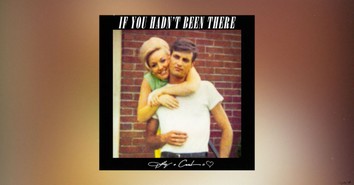What Tupperware’s Decline Can Teach Churches about Staying Relevant

It pays to be first, right? Not always. At least when it comes to innovation. A man by the name of Earl Tupper invented a product that transformed how Americans stored their food. The women who sold his airtight plastic containers called it “Tupperware.” The name stuck, and soon the product was a staple in American homes.
Fast forward to the 1980s, when Tupperware’s patents began to expire and things began to change. Tupperware “copycats” were everywhere and, more often than not, they were doing it better and with more innovation than, well, Tupperware.
Last month Tupperware filed for bankruptcy.
In an article in The Atlantic, Lora Kelley explores an interesting dynamic to the rise and eventual fall of a brand that was so successful that, like Band-Aids and Kleenex, its name became a generic term. She writes:
It makes intuitive sense that being the first to bring a product to a market would give a brand the advantage. But being the “first mover,” as it’s called in business parlance, isn’t a guarantee of being the most profitable. Tupperware is one of a batch of 20th-century brands, including Xerox and Polaroid, that created a product that defined their field but then struggled to compete with imitators.
Why?
As Eli Broad wrote in his book The Art of Being Unreasonable, “The companies that follow an innovator get to benefit from the customer base that innovator has identified and can learn from their predecessor’s mistakes.”
Going further, Broad adds how a “first mover” can “sometimes fall in love with its product and fail to realize when technology evolves, and consumers want something different.” Or as Fernando Suarez, a business professor at Northeastern, told Kelley, “The pride of being first, the pride of having invented the category,” sometimes makes companies reluctant to change.
There were other challenges facing Tupperware. It didn’t modernize its design, it remained expensive and it bypassed newer retail models like Target or Amazon until late in the game. I doubt many under 40 can remember being invited to a “Tupperware Party,” though that remained its primary sales outlet until 2022.
But it’s the perils of being a “first mover” that intrigue me and the reluctance “first movers” have toward innovation.
Few churches were more innovative than Willow Creek, which launched in 1975 in suburban Chicago. By the late ’80s, their “seven-step strategy” was influencing churches around the world. Consider their first three steps: build a relationship with an unchurched friend, share a verbal witness, and then invite them to a weekend “seeker” service. That was the outreach half of the strategy. The final four steps dealt with discipleship and assimilation: attend a midweek worship service, join a small group, discover and develop your spiritual gift(s), and become a steward of your resources.
The true innovation of their model was found in steps three and four. Namely, that you needed to separate your services into one designed for evangelism, and then another designed for worship and teaching. Hence the “seeker service” and the midweek “believer service.”
But by the late ’90s, and certainly into the early 2000s, many who had learned from Willow’s innovation were sensing a cultural sea-change in regard to the unchurched. For example, they didn’t seem as put off by experiential elements and even seemed to desire them. They wanted to belong before they believed. They were interested in participation, not just performance. They wanted to engage with, not simply be presented to.
As a result, many churches “innovated” by ending their midweek services and making their weekend services more experiential and participatory, while remaining sensitive to those who were attending from an unchurched background.
One of the last to end steps three and four of the seven-step strategy was, you guessed it, Willow. There are those who would say that many of the other innovations that marked Willow in the early days became somewhat frozen over time as other churches built on those innovations in ways that kept better pace with the times.
As a church, Willow Creek has been through tumultuous times. The moral failure of its founder, multiple resignations of staff and elders in the wake of that scandal, decreased attendance, decreased giving, and the closing of sites. But by all accounts, they are now attempting to right the ship and be about the Lord’s business.
But the point is that churches are as prone as any business in the marketplace to being a “first mover,” which then becomes a “reluctant changer.”
This is just one more reason why churches are among the most challenging of all organizations to lead. We simultaneously must hold to a core of doctrine and mission, vision and values that are timeless, while constantly seeking innovation with methodology and practice.
So to the complexities of that challenge, let’s add the importance of the Tupperware dynamic: if you make an innovation as a first mover,
... make sure you keep moving.
James Emery White
Photo Courtesy:©Sparrowstock
Published Date: September 30, 2024
Sources
Lora Kelly, “The Tupperware Trap,” The Atlantic, September 20, 2024, read online.
James Emery White is the founding and senior pastor of Mecklenburg Community Church in Charlotte, NC, and a former professor of theology and culture at Gordon-Conwell Theological Seminary, where he also served as their fourth president. His latest book, Hybrid Church: Rethinking the Church for a Post-Christian Digital Age, is now available on Amazon or from your favorite bookseller. To enjoy a free subscription to the Church & Culture blog, visit churchandculture.org where you can view past blogs in our archive, read the latest church and culture news from around the world, and listen to the Church & Culture Podcast. Follow Dr. White on X, Facebook, and Instagram at @JamesEmeryWhite.
Originally published September 30, 2024.





